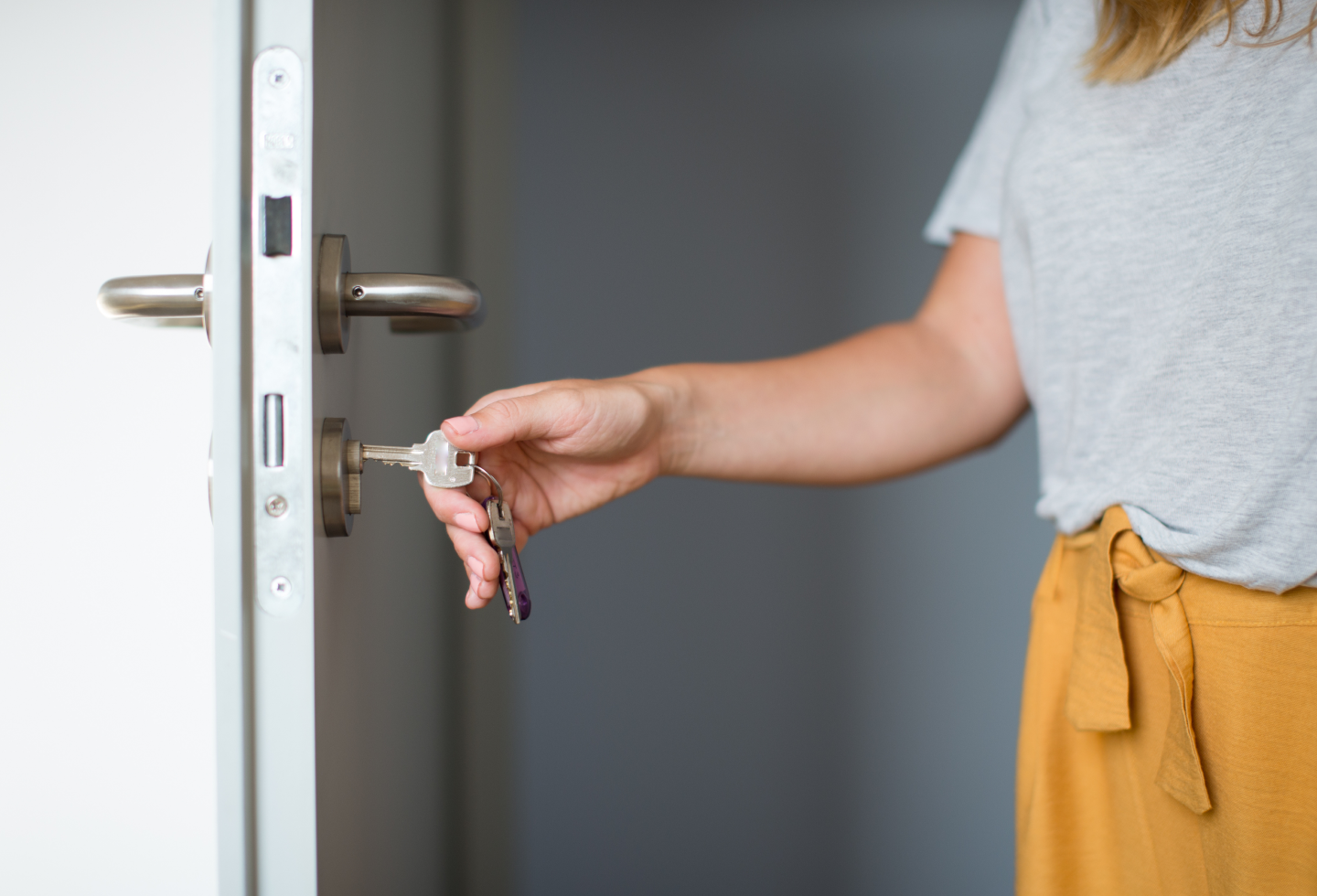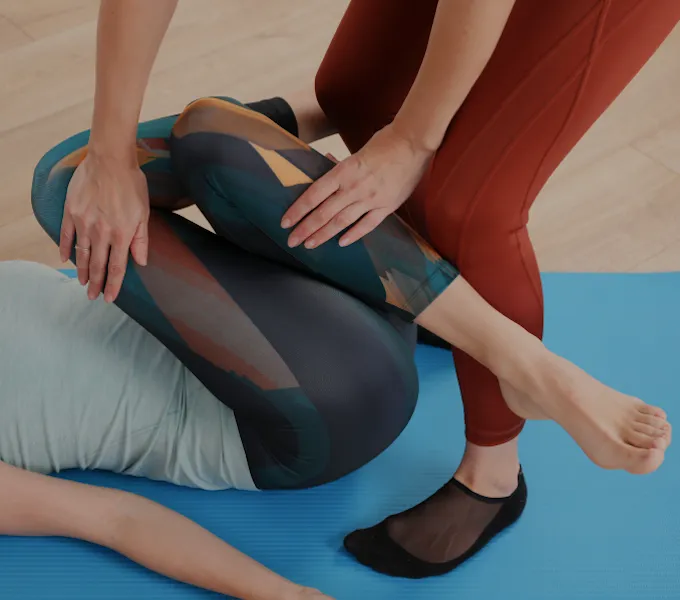
Latchkey Incontinence: Causes and How to Calm Your Bladder
Let’s be real, there’s never a good time to have a bladder leak. Urinary incontinence is always inconvenient. At mile 3 of your 4-mile run? Irritating. Out of the blue during sex? Mortifying. While you’re laughing so hard at your best friend’s joke that tears roll down your face? OK, maybe that one was worth it for the mood boost…
But if your bladder suddenly seizes every single time you reach your driveway and slide your key into the lock, that inconvenience takes on a whole new level.
If this sounds familiar, you may have situational urge incontinence (also known as “latchkey” incontinence), a form of urge incontinence that’s triggered by predictable cues, like putting your key in the door or hearing running water. But to reassure you, with a few simple strategies (and sometimes medication), most people can manage or even overcome this frustrating symptom.
What is situational urge incontinence (aka latchkey incontinence)?
Situational urge incontinence is a form of urge urinary incontinence (UUI) that happens in response to a learned or conditioned trigger. You might suddenly feel a powerful urge to pee (and sometimes even leak) when you do things like put your key in the front door or turn on the shower. Because of this, it’s often called “latchkey incontinence.”
Latchkey incontinence falls under the umbrella of overactive bladder syndrome (OAB), where urgency is the core symptom. Leakage can be as little as a few drops on the way to the bathroom, or as much as a complete loss of bladder control.
Scientists don’t know exactly how common latchkey incontinence is, but they do know that urinary incontinence overall affects about half of women at some point. Of those, around 1 in 10 have urge incontinence only, and about 1 in 6 have a mix of urge and stress incontinence. Urge incontinence, becomes more common with age, especially in women over 60.
The good news is that there are medical, surgical, and lifestyle-based treatments that can help manage latchkey incontinence and other symptoms of urinary urgency or overactive bladder.
Why does latchkey incontinence happen?
Latchkey incontinence happens because your brain learns to connect certain situations with needing to pee, almost like a conditioned reflex. For example, if you usually try to hold your pee until you get home, the act of unlocking your door can eventually trigger that urgent feeling.
Normally, your bladder and brain work together to stay in control:
- As your bladder fills, stretch receptors send signals to your brain.
- Your prefrontal cortex (the decision-making part of your brains) helps you suppress the urge until it’s the appropriate time to go.
- Your insula senses how full your bladder feels, helping to keep you in the loop for when it’s really time to go.
- The supplementary motor area keeps your pelvic floor muscles engaged until you choose to relax them once your sitting on the toilet.
- Finally, when it’s time to go, the pontine micturition center (PMC) flips the switch, signaling your bladder muscle (detrusor) to contract while the urethral sphincter relaxes.
With latchkey incontinence, this system get tricked. Research shows that triggers like running water or unlocking the door, can cause your brain to send the “go” signal too early. One study showed that when people see images of their personal triggers, their brain lights up in memory and attention areas, not the control center that normally helps resist urgency. In other words, the brain acts like your bladder is full even when it’s not.
These triggers don’t just affect your brain, they affect your bladder too. Another study showed that personalized trigger images caused stronger bladder sensations, overactivity of the bladder muscle (detrusor), and even leakage during testing. Meanwhile, “safe” images sometimes calmed bladder sensations.
All of this suggests that latchkey incontinence isn’t just about how full your bladder is, it’s about how your brain and bladder react to learned cues.
How can I break the cycle of latchkey incontinence?
The main goal in treating urge incontinence (including latchkey incontinence) is to reduce bladder overactivity and restore control. Here are some common treatment options.
Lifestyle and behavioral approaches
Because attention and memory are involved, strategies that focus on body awareness and mindfulness may help to retrain your system and reduce these sudden urges. This can include:
- Bladder training and timed voiding
- Urge suppression strategies
- Pelvic floor physical therapy
- Fluid and caffeine management
Medications
Certain medications can help to calm overactivity in the bladder:
- Antimuscarinics like oxybutynin, and solifenacin reduce detrusor overactivity
- β3-agonists like mirabegron relax the bladder muscle
Procedures
In cases when UUI is more severe, or resistant to things like medication or behavioral therapies, there are other medical treatments available:
- Botulinum toxin injections into the bladder wall
- Sacral neuromodulation (a pacemaker-like device for bladder nerves)
- Tibial nerve stimulation
In most cases, people don’t need surgery, and many improve with simple, consistent strategies at home.
How to calm an overactive bladder at home?
If you have situational urgency, the first step is to check in with your healthcare provider to rule out medical conditions or infections that could be contributing to your symptoms. If all looks good, scheduling an appointment with a pelvic floor physical therapist can give you a clearer picture of what’s happening with your bladder and pelvic floor control.
In the meantime, here are two strategies you can start practicing at home:
1. Bladder training
Bladder training helps retrain the brain–bladder connection so urgency feels less overwhelming:
- Start by keeping a bladder diary for 2 to 3 days to see how often you normally go.
- Pick a realistic starting point (like if you usually go every hour, start there).
- Gradually stretch the time between bathroom trips by 5 to 10 minutes every few days.
- Use the urge suppression tools below to help you ride out the discomfort until your scheduled time.
- Celebrate small wins because even adding 15 to 20 minutes over a few weeks is progress!
2. Urge suppression techniques
Urge suppression techniques are quick tools to calm urgency in the moment and help you get to the bathroom without leakage. Here’s how you can try them:
- Pause and stay still: Stop walking and take a slow breath before rushing to the toilet.
- Quick flicks: Do 3 to 5 rapid pelvic floor squeezes to send a “not yet” signal to your bladder.
- Distract your brain: Count backwards, hum a tune, or focus on something nearby.
- Slow breaths: Inhale through your nose, exhale through your mouth — this calms urgency.
The key is consistency. Just like training a muscle, your bladder and brain need repeated practice to build new habits. Over time, these strategies can help you feel more in control and less at the mercy of your sudden urges.
Overcoming latchkey incontinence with Origin Physical Therapy
Latchkey incontinence may feel frustrating, but it’s also highly manageable. Since these urges are often less about how full your bladder is and more about how your brain and bladder react to learned triggers, retraining the system with strategies like bladder training, urge suppression, and pelvic floor therapy — plus medical options if needed — can help you take back control.
If you’re ready to stop letting your bladder call the shots, reach out to Origin Physical Therapy. Our expert pelvic floor physical therapists can give you personalized guidance, proven strategies, and compassionate care to help you feel confident again.
Schedule a visit with Origin Physical Therapy today and take the first step toward calmer bladder control.
Sources
Clarkson, B. D., et al. "Neuroimaging of Situational Urgency and Incontinence." PMC, 2021, https://pmc.ncbi.nlm.nih.gov/articles/PMC8738101/.
Lee, U. J., et al. "Prevalence of Urinary Incontinence among a Nationally Representative Sample of Women, 2005–2016: Findings from the Urologic Diseases in America Project." Journal of Urology, vol. 205, no. 6, 2021, pp. 1718–1724, https://www.auajournals.org/doi/10.1097/JU.0000000000001634.
Rahman, M. "Neuroanatomy, Pontine Micturition Center." StatPearls, 2023, https://www.ncbi.nlm.nih.gov/books/NBK557419/.
Clarkson, B. D., et al. "Reproducing Situationally Triggered Urgency Incontinence Using Personalized Visual Cues." PubMed, 2020, https://pubmed.ncbi.nlm.nih.gov/32976670/.
Nandy, S. "Urge Incontinence." StatPearls, 2022, https://www.ncbi.nlm.nih.gov/books/NBK563172/.




